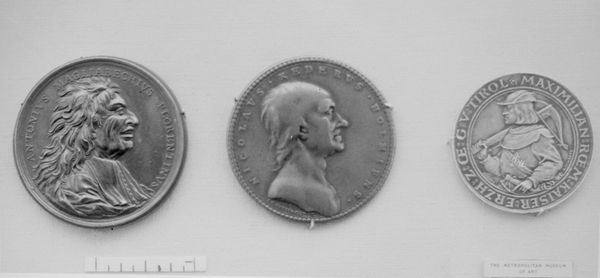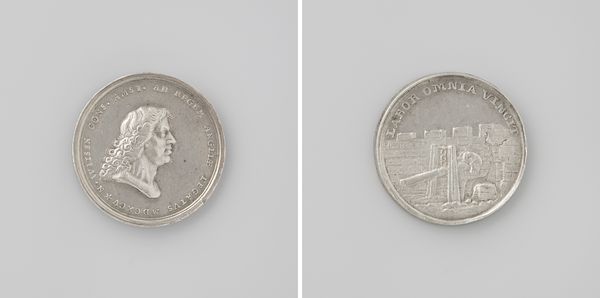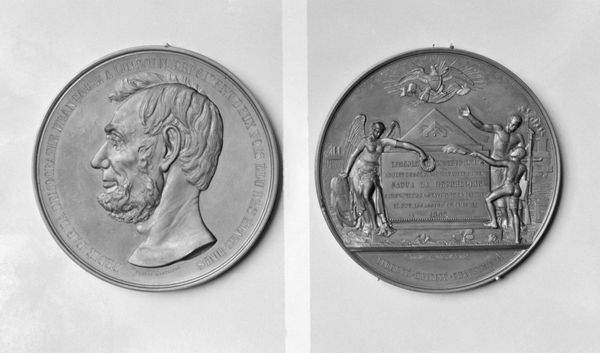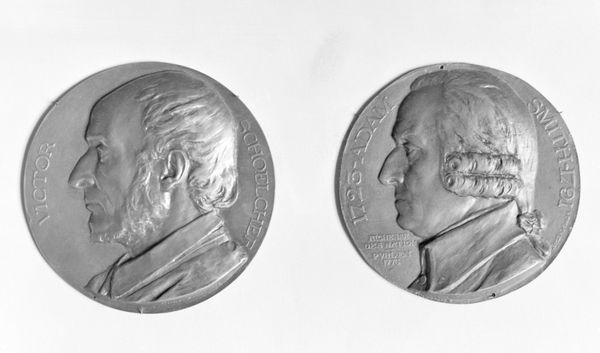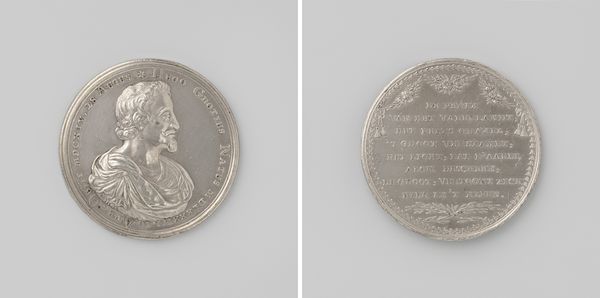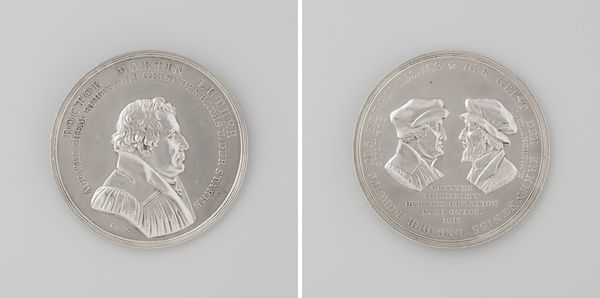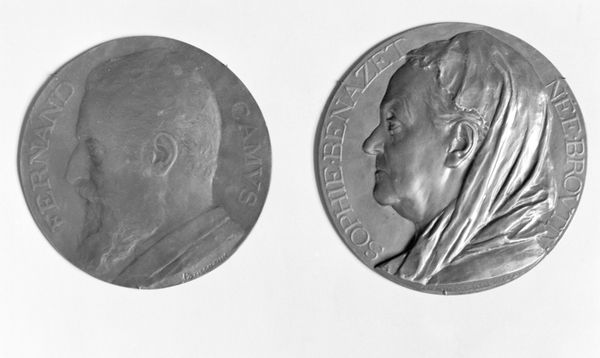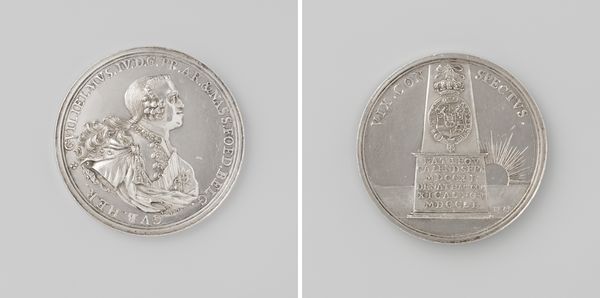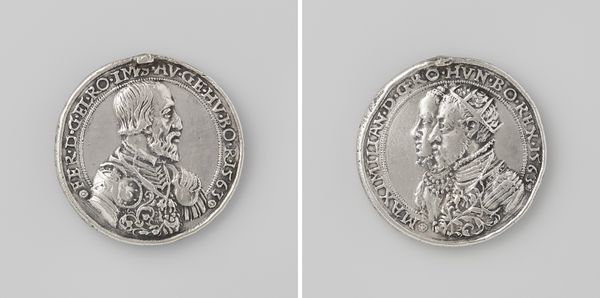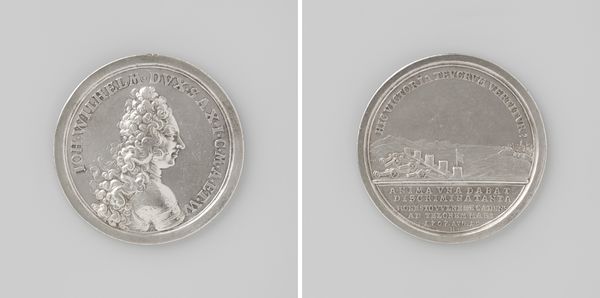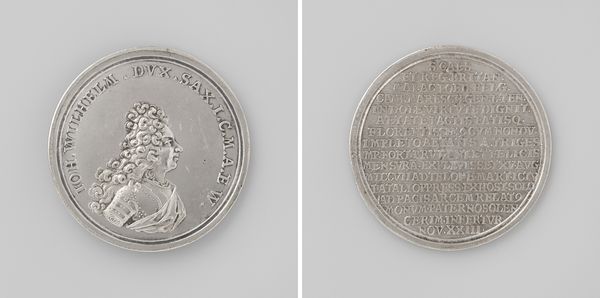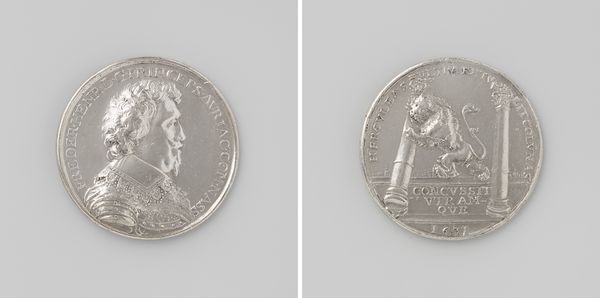
metal, sculpture, engraving
#
portrait
#
medal
#
metal
#
sculpture
#
sculpture
#
decorative-art
#
engraving
#
profile
Dimensions: Diameter: 44 mm
Copyright: Public Domain
Curator: Look at this, would you? A double dose of artistry on display! Augustin Dupré's metal sculpture, "Benjamin Franklin," created in 1786, is one impressive medallion. It currently resides at the Metropolitan Museum of Art in New York, a piece brimming with historical weight and artistic ingenuity. Editor: Right away, what strikes me is the sheer gravity, the sense of weighty importance – both literally, being a metal object, and figuratively. There's this… stillness, almost a solemnity about Franklin’s profile. And on the reverse, Masonic imagery? Unexpected, intriguing. Curator: Precisely! The profile, meticulously engraved, projects Franklin's renowned stoicism, the face of an elder statesman. Turning to the reverse, we see it dedicated to the Fredericksburg Lodge, No. 4, highlighting Franklin's Masonic connections and the lodge's activity. It all points towards the socio-political currents he navigated so brilliantly. Editor: So it is about elevating him? More like a symbol for an enlightened group? Were these kinds of portrait medals typical for figures of the era? Curator: Absolutely, this isn't just decorative, it is symbolic and political. Medals like these served to commemorate figures and events, circulating ideals and reinforcing status within a specific societal framework. In Franklin’s case, it connects him directly to Enlightenment values and Freemasonry. Editor: Knowing that this circulates political and ideological ideals alters how I view it. Suddenly, the medal is a form of propaganda, if you will, where the subject almost loses their identity by embodying these heavy concepts and belief systems. I see this as less of a tribute to Franklin and more so about the ideals surrounding Freemasonry. Curator: Yes! Consider how it shapes and perpetuates the values and image of Freemasonry to a wide audience. It's a reminder that art often has public aims, enmeshed with the complex politics of reputation. Editor: Amazing, isn’t it? Who would have guessed that behind that stoic face on a coin lies so much complexity in values? Curator: Indeed. Even a small piece like this serves as a lens onto significant shifts that shaped the public, which extends far beyond mere aesthetic appeal.
Comments
No comments
Be the first to comment and join the conversation on the ultimate creative platform.
